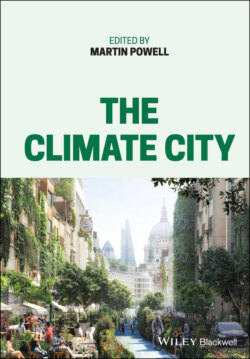Читать книгу The Climate City - Группа авторов - Страница 42
The Great Fire of London
ОглавлениеIn 1665, the Great Plague swept through London, killing about 200,000 people, almost one-quarter of London’s population.17 The people of London were to face another disaster a year later when a fire started on 2 September in the King’s bakery in Pudding Lane near London Bridge. It had been very hot that summer and there had been no rain for weeks. The wooden houses and buildings were tinder dry, so the fire spread rapidly across the city, its population powerless to stop it.18
As a result of the Great Fire, 80% of the city was destroyed: 13,200 houses, 87 churches, the Royal Exchange, Newgate Prison, and Bridewell Palace. It left 80,000 Londoners homeless, a fifth of the city’s population at the time and equivalent to almost two million people in today’s capital being made homeless.19
The Great Fire was not the first occurrence of disastrous fires to afflict London. St Paul’s Cathedral was first built in 605 and 70 years later was destroyed by a fire that swept through the city and once again in another fire in 1087. Alongside these disasters were two medieval fires that caused massive damage to London in 1135 and 1212, which resulted in the first Building Act of 1189 that legislated standards for building materials and footprints but clearly did not go far enough.
The Great Fire inspired a series of measures to prevent future fires. Each parish now had two fire “squirts” (an early attempt at the fire engine), which set the foundation for today’s fire brigade. The London Fire Prevention Regulations of 1668 also established a new water supply pipework and infrastructure, the origins are which are seen in modern fire hydrant systems.20 But it was the London Building Act of 1667 that takes its place as the single most influential piece of construction-related legislation in British history. It regulated storey-heights, banned timber facades in favour of brick and stone, and banned thatched roofs.21
Many of these structures are still enforced in building regulations today, with the roof of the new Globe Theatre being the first thatched roof permitted in London since the Great Fire. The real success of the 1667 Act, however, was that it was the first-time money was allocated by the state to employ surveyors to enforce building regulations.22 Thus, a profession that still exists today and our entire modern building control system was born.
It is also worth mentioning that the Great Fire helped bring about the end of the Great Plague by killing all the rats – another lesson London learned from disaster.
